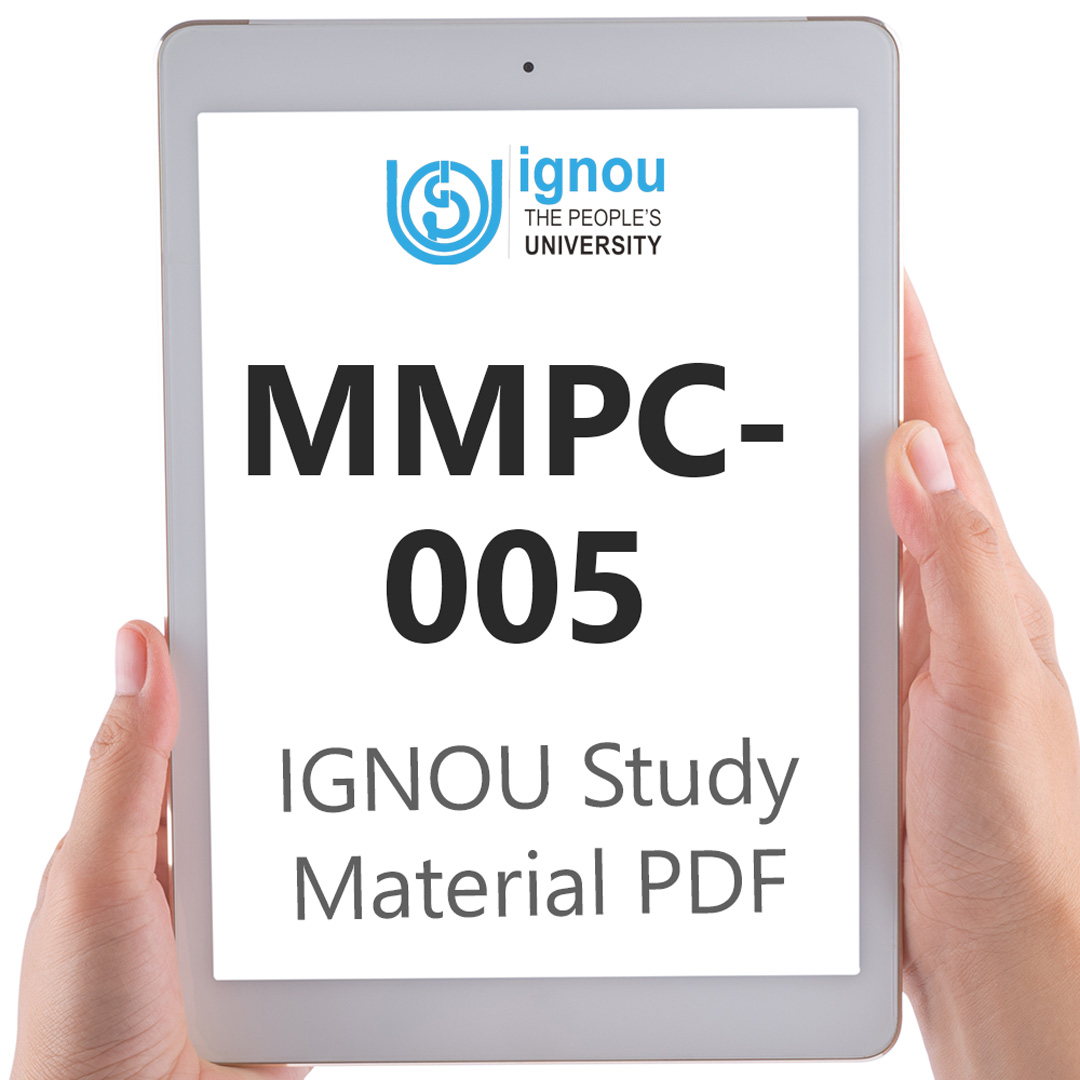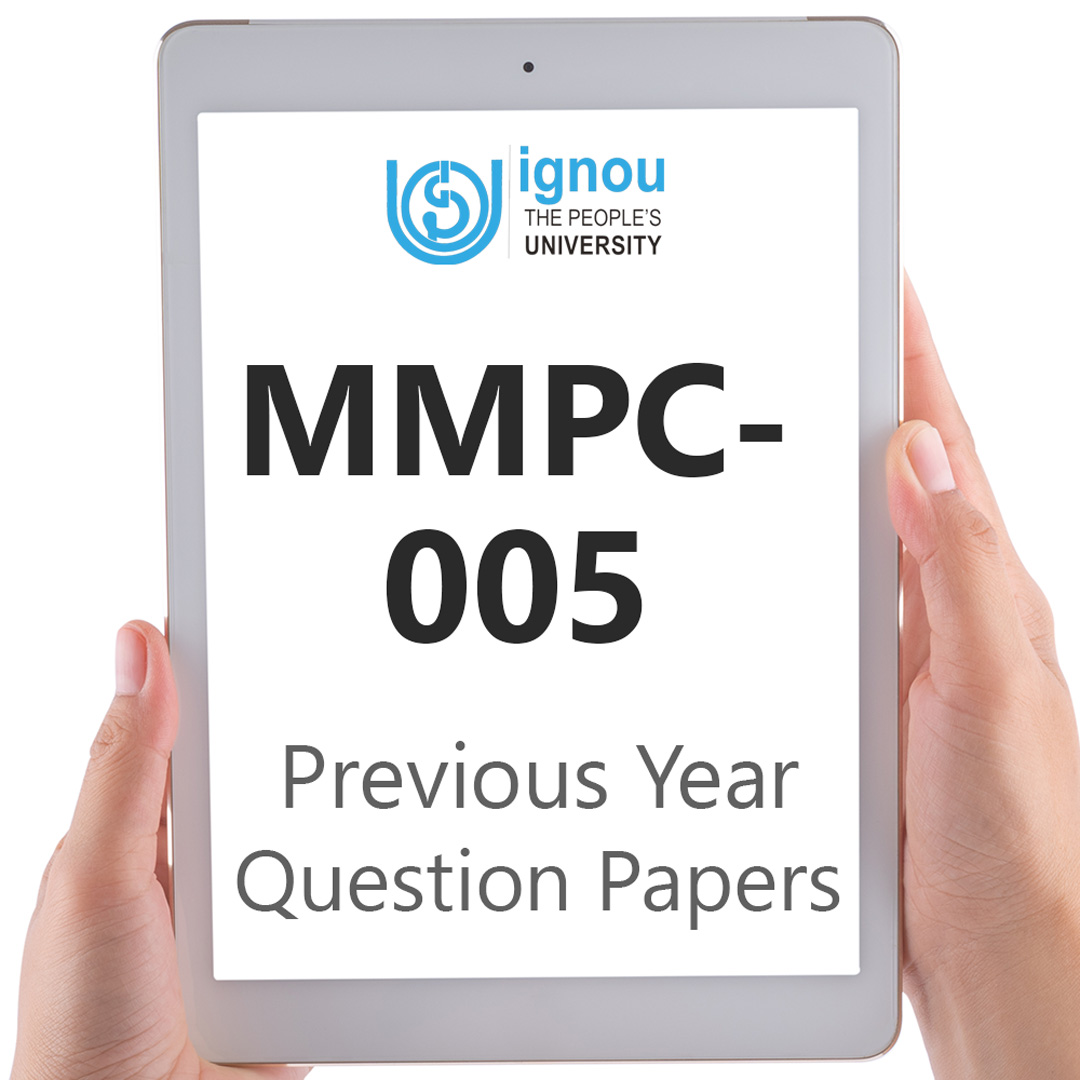If you are looking for MMPC-005 IGNOU Solved Assignment solution for the subject Quantitative Analysis for Managerial Applications, you have come to the right place. MMPC-005 solution on this page applies to 2023-24 session students studying in MBA, MBF, MBAFM, MBAHM, MBAMM, MBAOM, PGDIOM courses of IGNOU.
MMPC-005 Solved Assignment Solution by Gyaniversity
Assignment Code: MMPC-005/TMA/JULY/2023
Course Code: MMPC-005
Assignment Name: Quantitative Analysis for Managerial Applications
Year: 2023-2024
Verification Status: Verified by Professor
Q1) In a railway reservation office, two clerks are engaged in checking reservation forms. On an average, the first clerk (A1) checks 55% of the forms, while the second (A2) checks the remaining. While A1 has an error rate of 0.03, that of A2 is 0.02. A reservation form is selected at random from the total number of forms checked during a day and is discovered to have an error. Find the probabilities that it was checked by A1 and A2, respectively.
Ans) To find the probabilities that the error was made by A1 and A2, we can use Bayes' Theorem.
Let's denote the events as follows:
A1 = Error made by clerk A1.
A2 = Error made by clerk A2.
E = An error is found in the reservation form.
We are given the following probabilities and information:
P(A1) = Probability that the form is checked by A1 = 55% = 0.55.
P(A2) = Probability that the form is checked by A2 = 45% = 0.45.
P(E|A1) = Probability of error given A1 = 0.03.
P(E|A2) = Probability of error given A2 = 0.02.
We want to find:
P(A1|E) = Probability that the error was made by A1 given an error is found.
P(A2|E) = Probability that the error was made by A2 given an error is found.
We can use Bayes' Theorem:
So, the probability that the error was made by clerk A1 given an error is found is approximately 0.652, and the probability that the error was made by clerk A2 given an error is found is approximately 0.348.
Q2) “Data used in statistical study is termed as either “Primary” or “Secondary” depending upon whether it was collected specifically for the study in question or for some other purpose.” Explain both the sources of collecting the data in brief.
Ans) Data used in statistical studies can be categorized as either "Primary" or "Secondary" based on their sources:
Primary Data
Primary data refers to original data collected directly from individuals or sources for the purpose of a specific research study. It is firsthand information gathered by researchers to address their research questions or objectives. Here are some key characteristics and methods associated with primary data collection:
Purposeful Collection: Primary data is collected with a clear research objective in mind. Researchers design data collection methods and instruments to obtain information that is directly relevant to their study.
Data Collection Methods: There are various methods for collecting primary data, including surveys, interviews, observations, experiments, and questionnaires.
Each method is chosen based on the nature of the research and the type of data required.
Surveys: Surveys involve the systematic collection of information from a sample of individuals or respondents through structured questionnaires or interviews. Surveys are commonly used to gather data on opinions, attitudes, preferences, and demographics.
Interviews: Interviews can be conducted face-to-face, over the phone, or through online platforms. They allow researchers to have in-depth conversations with respondents and gather qualitative data.
Observations: Observational studies involve direct observation of subjects or events. Researchers record behaviours, actions, or events as they occur. Observations are useful for studying behaviour in natural settings.
Experiments: Experiments are controlled studies where researchers manipulate one or more variables to observe their effects. Experiments are designed to establish cause-and-effect relationships.
Time-Consuming: Collecting primary data can be time-consuming. Researchers must plan the data collection process, select appropriate samples, and ensure data accuracy.
Data Quality: Primary data is typically considered more accurate and reliable because it is collected for a specific purpose. Researchers have control over the data collection process and can address potential sources of bias.
Customization: Researchers can tailor primary data collection instruments to their specific research needs. This customization allows for precision in data gathering.
Secondary Data
Secondary data refers to information that has been collected by someone else or for a different purpose but can be used for a new research study. It involves the use of existing datasets, documents, records, or sources.
The key characteristics and considerations related to secondary data:
Preexisting Data: Secondary data already exists before the current research project. Researchers do not collect new data but rely on data that was gathered for other purposes, such as government reports, academic studies, databases, or publications.
Convenience: Using secondary data can be more convenient and cost-effective than collecting primary data. Researchers can access a wide range of existing datasets without the need for data collection efforts.
Data Sources: Secondary data can come from diverse sources, including government agencies, academic institutions, research organizations, commercial data providers, and libraries. Examples of secondary data sources include census data, economic indicators, medical records, and historical archives.
Data Limitations: There are potential limitations associated with secondary data. Researchers may have limited control over the data collection process, variable definitions, and the scope of available data. Data may not perfectly align with the research objectives.
Data Validation: Researchers using secondary data should assess data quality, reliability, and relevance to ensure it meets their research needs. They may need to clean, validate, and preprocess the data before analysis.
Historical Analysis: Secondary data can be valuable for historical research or trend analysis, allowing researchers to examine long-term patterns and changes.
Q3) A fair coin is tossed 400 times. Using normal approximation to the binomial, find the probability that a head will occur
a) More than 180 times
b) Less than 195 times.
Ans) To find the probability of getting a head more than 180 times and less than 195 times when a fair coin is tossed 400 times, we can use the normal approximation to the binomial distribution. The mean (μ) and standard deviation (σ) of the binomial distribution are calculated as follows:
You can find this probability from a standard normal distribution table or using a calculator, which will give you the probability associated with a z-score of -2. Let's assume it's approximately 0.9772.
b) Probability of getting less than 195 heads
We need to find P(X < 195). Again, we'll convert it to a z-score:
Q4) “The primary purpose of forecasting is to provide valuable information for planning the design and operation of the enterprise.” Comment on the statement.
Ans) The statement "The primary purpose of forecasting is to provide valuable information for planning the design and operation of the enterprise" is indeed accurate. Forecasting plays a crucial role in the strategic and operational aspects of any enterprise, and its significance lies in the following points:
Planning and Decision-Making: Forecasting provides insights into future trends, demand patterns, and potential challenges. This information is essential for formulating business strategies and making informed decisions. For example, a manufacturing company can use sales forecasts to plan production schedules, manage inventory, and allocate resources efficiently.
Resource Allocation: Effective resource allocation is vital for the smooth operation of an enterprise. By forecasting demand, an organization can allocate resources such as manpower, materials, and capital more effectively. This prevents underutilization or overutilization of resources, reducing costs and optimizing productivity.
Risk Mitigation: Businesses face various risks, including market fluctuations, economic uncertainties, and competitive pressures. Accurate forecasting allows enterprises to identify potential risks in advance and develop risk mitigation strategies. For instance, financial forecasting can help a company prepare for economic downturns or unexpected financial challenges.
Competitive Advantage: In a competitive market, enterprises that can anticipate market trends and customer preferences gain a competitive edge. Forecasting enables companies to tailor their products, services, and marketing strategies to meet changing customer demands, enhancing their competitive advantage.
Financial Planning: Financial forecasting is crucial for budgeting and financial planning. It helps organizations estimate future revenue, expenses, and cash flow, enabling them to set realistic financial goals, allocate budgets, and secure necessary funding.
Operational Efficiency: Forecasting assists in optimizing operations by aligning production, distribution, and supply chain activities with anticipated demand. This reduces operational inefficiencies, minimizes excess inventory, and ensures timely delivery of products or services.
Strategic Growth: Businesses aiming for growth and expansion rely on forecasting to identify opportunities and potential markets. It helps in devising growth strategies, entering new markets, and diversifying product offerings.
Customer Satisfaction: Meeting customer expectations is paramount for any enterprise. Accurate forecasting ensures that products or services are available when and where customers need them, enhancing customer satisfaction and loyalty.
Forecasting is a fundamental tool for enterprises across industries. It empowers organizations with valuable insights into the future, enabling them to plan, adapt, and make informed decisions. By aligning design and operational strategies with forecasted trends and demands, enterprises can enhance their competitiveness, efficiency, and overall success.
Q5) Write short notes on any three of the following:
Q5. a) Methods of Collecting Primary Data
Ans) Primary data is original data collected directly from individuals or sources for a specific research purpose.
There are various methods to collect primary data:
Surveys: Surveys involve structured questionnaires or interviews with a sample of respondents. They are useful for gathering information on opinions, preferences, and demographics.
Interviews: Interviews can be conducted face-to-face or remotely. They allow for in-depth exploration of topics and are often used in qualitative research.
Observations: Observations entail watching and recording behaviours, events, or processes. This method is commonly used in fields like anthropology and psychology to study natural behaviours.
Experiments: Experiments are controlled studies where researchers manipulate variables to test hypotheses and establish cause-and-effect relationships.
Q5. b) Decision Tree Approach
Ans) A decision tree is a graphical representation of decision-making processes. It consists of nodes (decision points), branches (possible outcomes), and leaves (final decisions). Decision trees are commonly used in machine learning and decision analysis to model complex decision scenarios. They help break down a decision into smaller, manageable steps and visualize the potential consequences of each choice.
Q5. c) Central Limit Theorem
Ans) The central limit theorem (CLT) is a fundamental concept in statistics. It states that when you take multiple random samples from a population and calculate the means of those samples, the distribution of those sample means will be approximately normal, even if the original population is not normally distributed. This theorem is essential for hypothesis testing, confidence interval estimation, and statistical inference.








